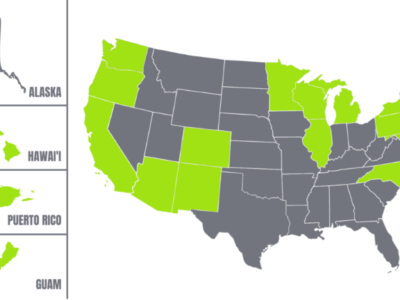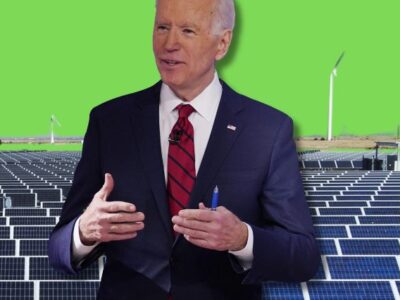Transportation
The Green-State Playbook
Here are five ways states can save climate policy despite Trump.
Trump’s election is a body blow to U.S. climate policy, but there are ways that those states can fight Trump and move forward on their own plans. To cut to the chase, here are five key strategies for green states — starting with lawsuits against the Trump Administration, which were highly successful in Trump’s first term.
CONTINUE READINGTrump’s War Against NEPA
One of Trump’s Executive Orders Heralds a Revolution in NEPA Practice
What’s going on here is pretty obvious, It’s not “improving environmental rules.” No, the title of the subsection is “Unleashing Energy Dominance through Efficient Permitting.” Anything that gets in the way of fossil fuel development – which is what Trump means by energy dominance – is going to get steamrolled. Including the environment.
CONTINUE READINGSurfing the Wave of Executive Orders
As an old song says, “Mama Miá, here we go again!”
One thing that no one can deny is that Trump is brilliant at political theater. People overlook the importance of that at their peril. But theater isn’t reality, and it remains to be seen how many of the grand gestures Trump made today will eventuate in law.Presidents love issuing executive orders. It’s easy to do, and many people will credit the president with major accomplishment. But really, as someone recently said, an executive order is “just a memo on fancy letterhead.”
CONTINUE READINGJoe Biden, Hail and Farewell
His climate actions will resonate far into the future.
Joe Biden is about to vanish from the political scene, but not from the history books. The last election casts a pall on his reputation, as does his unpopularity. But history may be kinder, as it has been for Harry Truman and Jimmy Carter. Beyond all else, he has been our best president yet on climate policy. For our descendants, that will matter a lot more than a couple of years of inflation that impacted their ancestors.
CONTINUE READINGTalking Climate Policy with an Energy Economist
An interview with leading energy expert Catherine Wolfram
Catherine Wolfram, a leading energy economist who has researched the impact of the Inflation Reduction Act, shares her views of the impact of the IRA, its likely fate, and the energy policies of the incoming Trump Administration. Wolfram served as the Deputy Assistant Secretary for Climate and Energy Economics at the US Treasury in 2021-2022
CONTINUE READINGTesla’s Trajectory
What do recent developments teach us about the world?
Recent news about Tesla sheds light on the company’s future, the global EV market, crony capitalism, not to mention the state of American democracy. It may also say something about Elon Musk’s role in the company. That’s a lot of information wrapped up in Tesla’s stock prices and related developments. Overall, this is good news for the environment but bad news for democracy.
CONTINUE READINGWhat Is A “Sustainable Battery”?
CLEE’s Global Forum for Sustainable Batteries releases a 2040 Sustainable Battery Vision
As the market for the electric buses, cars, trucks, and trains that help curb the climate crisis continues to grow globally, the battery supply chain faces increased scrutiny. Minerals like lithium, nickel, graphite, and cobalt are too often mined and processed in ways that contribute to harming communities and ecosystems, while the batteries often face …
Continue reading “What Is A “Sustainable Battery”?”
CONTINUE READINGA Framework for Equity and Local Leadership in the EV Transition
New tools to help local governments plan for equitable and effective investments
Eliminating fossil fuel-powered vehicles from the road is necessary to fight climate change and save thousands of lives at risk due to poor air quality. As governments and the auto industry advance the switch to electric vehicles, this rapid technology transition may disrupt traditional mobility patterns–and, without equitable planning and policy, it has the potential …
Continue reading “A Framework for Equity and Local Leadership in the EV Transition”
CONTINUE READINGNEPA in the Supreme Court — On the Eve of Oral Argument
Some thoughts about how the Court should define some limits on indirect effects.
Our paper on the proper scope of NEPA places heavy emphasis on foreseeability, but in an expanded version of the paper we consider some unusual situations where additional factors come into play. This additional analysis makes clear important limits on NEPA scope that we think address at least some of the concerns that have (appropriately) been raised about ever-expanding NEPA review and the risk that it will hamper efforts to develop needed infrastructure.
CONTINUE READINGWhat does the election mean for the EV transition?
Slower, less certain, and less equitable–with a new focus on local leadership
The election of Donald Trump and a Republican Congress poses a direct threat to environmental protection and climate policy across the board, including destructive agency heads, reduced clean energy funding, abandoned international agreements, and more federal judges openly hostile to science-based regulation in service of public and environmental health. It’s a bleak outlook from any …
Continue reading “What does the election mean for the EV transition?”
CONTINUE READING











